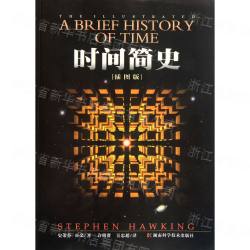-
内容大纲
本书在前三版的基础上,为适应计算机视觉领域的革命性变化——深度学习的出现,出版了第四版。更新内容主要体现在:伪代码描述改用Python和MATLAB(放弃了Mathcad);新增阐述深度学习,包括主要的深度网络结构、学习得到的深度特征和性能评价。此外,本书还补充了双向滤波、Krawtchouk矩、超像素、空时兴趣点和更多的距离测度等。总之,本书既涵盖基础,又突出重点,全面阐述了边缘检测、固定形状匹配、可变形状分析、目标描述、基于区域的分析和运动对象检测及描述等低级和高级特征提取方法。
本书适合作为电子工程、计算机科学、计算机工程等专业的本科双语教学教材,也适合图像及视频信号处理、模式识别和计算机视觉方向的研究生参考阅读。 -
作者介绍
-
目录
Chapter 1 Introduction 绪论
1.1 Overview 概述
1.2 Human and computer vision 人类视觉和计算机视觉
1.3 The human vision system 人类视觉系统
1.3.1 The eye 眼睛
1.3.2 The neural system 神经系统
1.3.3 Processing 处理系统
1.4 Computer vision systems 计算机视觉系统
1.4.1 Cameras 照相机
1.4.2 Computer interfaces 计算机接口
1.5 Processing images 图像处理
1.5.1 Processing 处理
1.5.2 Hello Python, hello images Python 图像初探
1.5.3 Mathematical tools 数学工具
1.5.4 Hello Matlab MATLAB 图像初探
1.6 Conclusions 小结
References 参考文献
Chapter 2 Images, sampling and frequency domain processing 图像、采样和频域处理
2.1 Overview 概述
2.2 Image formation 图像形成
2.3 The Fourier Transform 傅里叶变换
2.4 The sampling criterion 采样准则
2.5 The discrete Fourier Transform 离散傅里叶变换
2.5.1 One-dimensional transform 一维变换
2.5.2 Two-dimensional transform 二维变换
2.6 Properties of the Fourier Transform 傅里叶变换的特性
2.6.1 Shift invariance 位移不变性
2.6.2 Rotation 旋转
2.6.3 Frequency scaling 频率尺度变化
2.6.4 Superposition (linearity) 叠加(线性)
2.6.5 The importance of phase 相位的重要性
2.7 Transforms other than Fourier 除傅里叶变换以外的其他变换
2.7.1 Discrete cosine transform 离散余弦变换
2.7.2 Discrete Hartley Transform 离散Hartley变换
2.7.3 Introductory wavelets 小波简介
2.7.4 Other transforms 其他变换
2.8 Applications using frequency domain properties 频域特性的应用
2.9 Further reading 扩展阅读
References 参考文献
Chapter 3 Image processing 图像处理运算
3.1 Overview 概述
3.2 Histograms 直方图
3.3 Point operators 点运算
3.3.1 Basic point operations 基本点运算
3.3.2 Histogram normalisation 直方图归一化
3.3.3 Histogram equalisation 直方图均衡化
3.3.4 Thresholding 阈值处理
3.4 Group operations 组运算
3.4.1 Template convolution 模板卷积
3.4.2 Averaging operator 平均算子
3.4.3 On different template size 不同的模板大小
3.4.4 Template convolution via the Fourier transform 利用傅里叶变换的模板卷积
3.4.5 Gaussian averaging operator 高斯平均算子
3.4.6 More on averaging 更多平均处理
3.5 Other image processing operators 其他图像处理操作
3.5.1 Median filter 中值滤波
3.5.2 Mode filter 众数滤波
3.5.3 Nonlocal means 非局部均值
3.5.4 Bilateral filtering 双边滤波
3.5.5 Anisotropic diffusion 各向异性扩散
3.5.6 Comparison of smoothing operators 各种平滑算子的比较
3.5.7 Force field transform 力场变换
3.5.8 Image ray transform 图像射线变换
3.6 Mathematical morphology 数学形态学
3.6.1 Morphological operators 形态学算子
3.6.2 Grey level morphology 灰度形态学
3.6.3 Grey level erosion and dilation 灰度图像的腐蚀和膨胀
3.6.4 Minkowski operators Minkowski 算子
3.7 Further reading 扩展阅读
References 参考文献
Chapter 4 Low-level feature extraction (including edge detection) 低级特征提取(包括边缘检测)
4.1 Overview 概述
4.2 Edge detection 边缘检测
4.2.1 First-order edge detection operators 一阶边缘检测算子
4.2.2 Second-order edge detection operators 二阶边缘检测算子
4.2.3 Other edge detection operators 其他边缘检测算子
4.2.4 Comparison of edge detection operators 边缘检测算子的比较
4.2.5 Further reading on edge detection 关于边缘检测的扩展阅读
4.3 Phase congruency 相位一致性
4.4 Localised feature extraction 定位特征提取
4.4.1 Detecting image curvature (corner extraction) 检测图像曲率(角点提取)
4.4.2 Feature point detection: region/patch analysis 特征点检测:区域/样本块分析
4.4.3 Saliency 显著度
4.5 Describing image motion 描述图像运动
4.5.1 Area-based approach 基于区域的方法
4.5.2 Differential approach 差分方法
4.5.3 Recent developments: deep flow, epic flow and extensions 新近发展:深度流,epic流和扩展
4.5.4 Analysis of optical flow 光流的分析
4.6 Further reading 扩展阅读
References 参考文献
Chapter 5 High-level feature extraction: fixed shape matching 高级特征提取:固定形状匹配
5.1 Overview 概述
5.2 Thresholding and subtraction 阈值处理和背景减
5.3 Template matching 模板匹配
5.3.1 Definition 定义
5.3.2 Fourier transform implementation 傅里叶变换实现
5.3.3 Discussion of template matching 模板匹配的讨论
5.4 Feature extraction by low-level features 低级特征提取
5.4.1 Appearance-based approaches 基于外观的方法
5.4.2 Distribution-based descriptors 基于分布的描述符
5.5 Hough transform 霍夫变换
5.5.1 Overview 概述
5.5.2 Lines 直线
5.5.3 HT for circles 基于霍夫变换的圆检测
5.5.4 HT for ellipses 基于霍夫变换的椭圆检测
5.5.5 Parameter space decomposition 参数空间分解
5.5.6 Generalised Hough transform 广义霍夫变换
5.5.7 Other extensions to the HT 霍夫变换的其他扩展
5.6 Further reading 扩展阅读
References 参考文献
Chapter 6 High-level feature extraction: deformable shape analysis 高级特征提取:可变形形状分析
6.1 Overview 概述
6.2 Deformable shape analysis 可变形形状分析
6.2.1 Deformable templates 可变形模板
6.2.2 Parts-based shape analysis 基于部件的形状分析
6.3 Active contours (snakes) 主动轮廓(蛇模型)
6.3.1 Basics 基础知识
6.3.2 The Greedy Algorithm for snakes 蛇模型的贪心算法
6.3.3 Complete (Kass) Snake implementation 完全(Kass)蛇模型实现
6.3.4 Other Snake approaches 其他蛇模型方法
6.3.5 Further Snake developments 蛇模型的进一步发展
6.3.6 Geometric active contours (Level Set-Based Approaches) 几何主动轮廓(水平集方法)
6.4 Shape Skeletonisation 形状骨架化
6.4.1 Distance transforms 距离变换
6.4.2 Symmetry 对称性
6.5 Flexible shape models–active shape and active appearance 灵活的形状模型——主动形状和主动外观
6.6 Further reading 扩展阅读
References 参考文献
Chapter 7 Object description 目标描述
7.1 Overview and invariance requirements 概述和不变性要求
7.2 Boundary descriptions 边界描述
7.2.1 Boundary and region 边界和区域
7.2.2 Chain codes 链码
7.2.3 Fourier descriptors 傅里叶描述符
7.3 Region descriptors 区域描述符
7.3.1 Basic region descriptors 基本区域描述符
7.3.2 Moments 矩
7.4 Further reading 扩展阅读
References 参考文献
Chapter 8 Region-based analysis 基于区域的分析
8.1 Overview 概述
8.2 Region-based analysis 基于区域的分析
8.2.1 Watershed transform 分水岭变换
8.2.2 Maximally stable extremal regions 最大稳定极值区域
8.2.3 Superpixels 超像素
8.3 Texture description and analysis 纹理描述与分析
8.3.1 What is texture 什么是纹理
8.3.2 Performance requirements 性能要求
8.3.3 Structural approaches 结构法
8.3.4 Statistical approaches 统计法
8.3.5 Combination approaches 组合法
8.3.6 Local binary patterns 局部二值模式
8.3.7 Other approaches 其他方法
8.3.8 Segmentation by texture 基于纹理的分割
8.4 Further reading 扩展阅读
References 参考文献
Chapter 9 Moving object detection and description 运动对象检测与描述
9.1 Overview 概述
9.2 Moving object detection 运动对象检测
9.2.1 Basic approaches 基本方法
9.2.2 Modelling and adapting to the (static) background 建模并适应(静止)背景
9.2.3 Background segmentation by thresholding 通过阈值化进行背景分割
9.2.4 Problems and advances 问题与进展
9.3 Tracking moving features 跟踪运动特征
9.3.1 Tracking moving objects 跟踪运动目标
9.3.2 Tracking by local search 通过局部搜索进行跟踪
9.3.3 Problems in tracking 跟踪中的问题
9.3.4 Approaches to tracking 跟踪方法
9.3.5 Meanshift and Camshift Meanshift与Camshift
9.3.6 Other approaches 其他方法
9.4 Moving feature extraction and description 运动特征提取与描述
9.4.1 Moving (biological) shape analysis 运动(生物)的形状描述
9.4.2 Space–time interest points 空时兴趣点
9.4.3 Detecting moving shapes by shape matching in image sequences 基于形状匹配的运动形状检测
9.4.4 Moving shape description 运动形状描述
9.5 Further reading 扩展阅读
References 参考文献
Chapter 10 Camera geometry fundamentals 照相机几何基础
10.1 Overview 概述
10.2 Projective space 投影空间
10.2.1 Homogeneous co-ordinates and projective geometry 齐次坐标和投影几何
10.2.2 Representation of a line, duality and ideal points 直线的表示法、对偶性和理想点
10.2.3 Transformations in the projective space 投影空间的变换
10.2.4 Computing a planar homography 计算共点面成像
10.3 The perspective camera 透视照相机
10.3.1 Perspective camera model 透视照相机模型分析
10.3.2 Parameters of the perspective camera model 透视照相机模型的参数
10.3.3 Computing a projection from an image 根据图像计算投影
10.4 Affine camera 仿射照相机
10.4.1 Affine camera model 仿射照相机模型
10.4.2 Affine camera model and the perspective projection 仿射照相机模型和透视投影
10.4.3 Parameters of the affine camera model 仿射照相机模型的参数
10.5 Weak perspective model 弱透视模型
10.6 Discussion 讨论
10.7 Further reading 扩展阅读
References 参考文献
Chapter 11 Colour images 彩色图像
11.1 Overview 概述
11.2 Colour image theory 彩色图像理论
11.2.1 Colour images 彩色图像
11.2.2 Tristimulus theory 三刺激理论
11.2.3 The colourimetric equation 比色等式
11.2.4 Luminosity function 光谱视亮度函数
11.3 Perception-based colour models: CIE RGB and CIE XYZ 基于感知的颜色模型:CIE RGB与CIE XYZ
11.3.1 CIE RGB colour model: Wright–Guild data 根据Wright Guild 数据构造CIE RGB颜色模型
11.3.2 CIE RGB colour matching functions CIE RGB颜色匹配函数
11.3.3 CIE RGB chromaticity diagram and chromaticity co-ordinates CIE RGB 色度表和色度坐标
11.3.4 CIE XYZ colour model CIE XYZ颜色模型
11.3.5 CIE XYZ colour matching functions CIE XYZ颜色匹配函数
11.3.6 XYZ chromaticity diagram XYZ色度表
11.3.7 Uniform colour spaces: CIE LUV and CIE LAB 均匀颜色空间:CIE LUV和CIE LAB
11.4 Additive and subtractive colour models 加性和减性颜色模型
11.4.1 RGB and CMY RGB和CMY颜色模型
11.4.2 Transformation between RGB models RGB颜色模型之间的变换
11.4.3 Transformation between RGB and CMY models RGB和CMY颜色模型之间的变换
11.5 Luminance and chrominance colour models 亮度和色度模型
11.5.1 YUV, YIQ and YCbCr models YUV, YIQ和YCbCr模型
11.5.2 Luminance and gamma correction 亮度和伽马修正
11.5.3 Chrominance 色度
11.5.4 Transformations between YUV, YIQ and RGB colour models YUV, YIQ和RGB颜色模型之间的变换
11.5.5 Colour model for component video: YPbPr 分量视频的颜色模型:YPbPr
11.5.6 Colour model for digital video: YCbCr 数字视频的颜色模型:YCbCr
11.6 Additive perceptual colour models 加性的感知颜色模型
11.6.1 The HSV and HLS colour models HSV和HLS颜色模型
11.6.2 The hexagonal model: HSV 六边形模型:HSV
11.6.3 The triangular model: HLS 三角形模型:HLS
11.6.4 Transformation between HLS and RGB HLS和RGB之间的变换
11.7 More colour models 更多的颜色模型
References 参考文献
Chapter 12 Distance, classification and learning 距离、分类和学习
12.1 Overview 概述
12.2 Basis of classification and learning 分类和学习基础
12.3 Distance and classification 距离和分类
12.3.1 Distance measures 距离测度
12.3.2 The k-nearest neighbour for classification k最近邻分类
12.4 Neural networks and Support Vector Machines 神经网络和支持向量机
12.5 Deep learning 深度学习
12.5.1 Basis of deep learning 深度学习基础
12.5.2 Major deep learning architectures 主要的深度学习网络结构
12.5.3 Deep learning for feature extraction 面向特征提取的深度学习
12.5.4 Deep learning performance evaluation 深度学习性能评价
12.6 Further reading 进一步阅读
References 参考文献
同类热销排行榜
- C语言与程序设计教程(高等学校计算机类十二五规划教材)16
- 电机与拖动基础(教育部高等学校自动化专业教学指导分委员会规划工程应用型自动化专业系列教材)13.48
- 传感器与检测技术(第2版高职高专电子信息类系列教材)13.6
- ASP.NET项目开发实战(高职高专计算机项目任务驱动模式教材)15.2
- Access数据库实用教程(第2版十二五职业教育国家规划教材)14.72
- 信号与系统(第3版下普通高等教育九五国家级重点教材)15.08
- 电气控制与PLC(普通高等教育十二五电气信息类规划教材)17.2
- 数字电子技术基础(第2版)17.36
- VB程序设计及应用(第3版十二五职业教育国家规划教材)14.32
- Java Web从入门到精通(附光盘)/软件开发视频大讲堂27.92
推荐书目
-

孩子你慢慢来/人生三书 华人世界率性犀利的一枝笔,龙应台独家授权《孩子你慢慢来》20周年经典新版。她的《...
-

时间简史(插图版) 相对论、黑洞、弯曲空间……这些词给我们的感觉是艰深、晦涩、难以理解而且与我们的...
-

本质(精) 改革开放40年,恰如一部四部曲的年代大戏。技术突变、产品迭代、产业升级、资本对接...

 [
[
